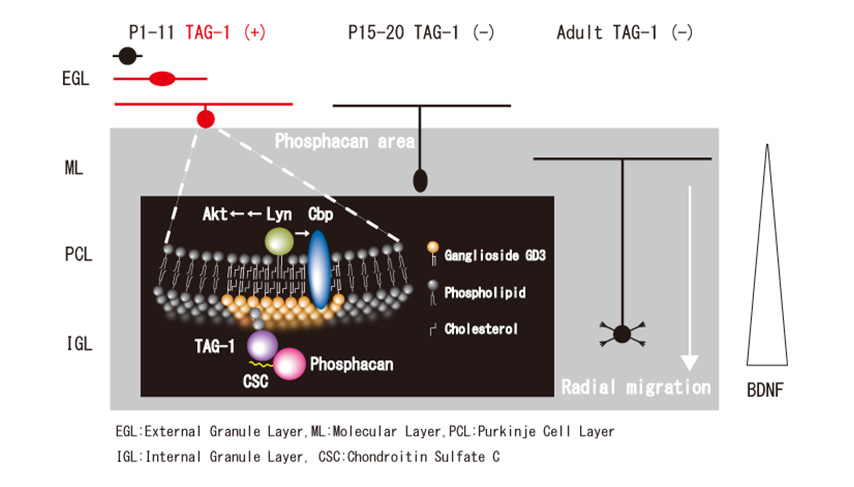
Phosphacan, a chondroitin sulfate proteoglycan, is a repulsive cue of cerebellar granule cells. This study aims to explore the molecular mechanism. The glycosylphosphatidylinositol-anchored neural adhesion molecule TAG-1 is a binding partner of phosphacan, suggesting that the repulsive effect of phosphacan is possibly due to its interaction with TAG-1. The repulsive effect was greatly reduced on primary cerebellar granule cells of TAG-1-deficient mice. Surface plasmon resonance analysis confirmed the direct interaction of TAG-1 with chondroitin sulfate C. On postnatal days 1, 4, 7, 11, 15, and 20 and in adulthood, phosphacan was present in the molecular layer and internal granular layer, but not in the external granular layer. In contrast, transient TAG-1 expression was observed exclusively within the premigratory zone of the external granular layer on postnatal days 1, 4, 7, and 11. Boyden chamber cell migration assay demonstrated that phosphacan exerted its repulsive effect on the spontaneous and brain-derived neurotrophic factor (BDNF)-induced migration of cerebellar granule cells. The BDNF-induced migration was inhibited by MK-2206, an Akt inhibitor. The pretreatment with a raft-disrupting agent, methyl--cyclodextrin, also inhibited the BDNF-induced migration, suggesting that lipid rafts are involved in the migration of cerebellar granule cells. In primary cerebellar granule cells obtained on postnatal day 7 and cultured for 7 days, the ganglioside GD3 and TAG-1 preferentially localized in the cell body, whereas the ganglioside GD1b and NB-3 localized in not only the cell body but also neurites. Pretreatment with the anti-GD3 antibody R24, but not the anti-GD1b antibody GGR12, inhibited the spontaneous and BDNF-induced migration, and attenuated BDNF-induced Akt activation. These findings suggest that phosphacan is responsible for the repulsion of TAG-1-expressing cerebellar granule cells via GD3 rafts to attenuate BDNF-induced migration signaling.
